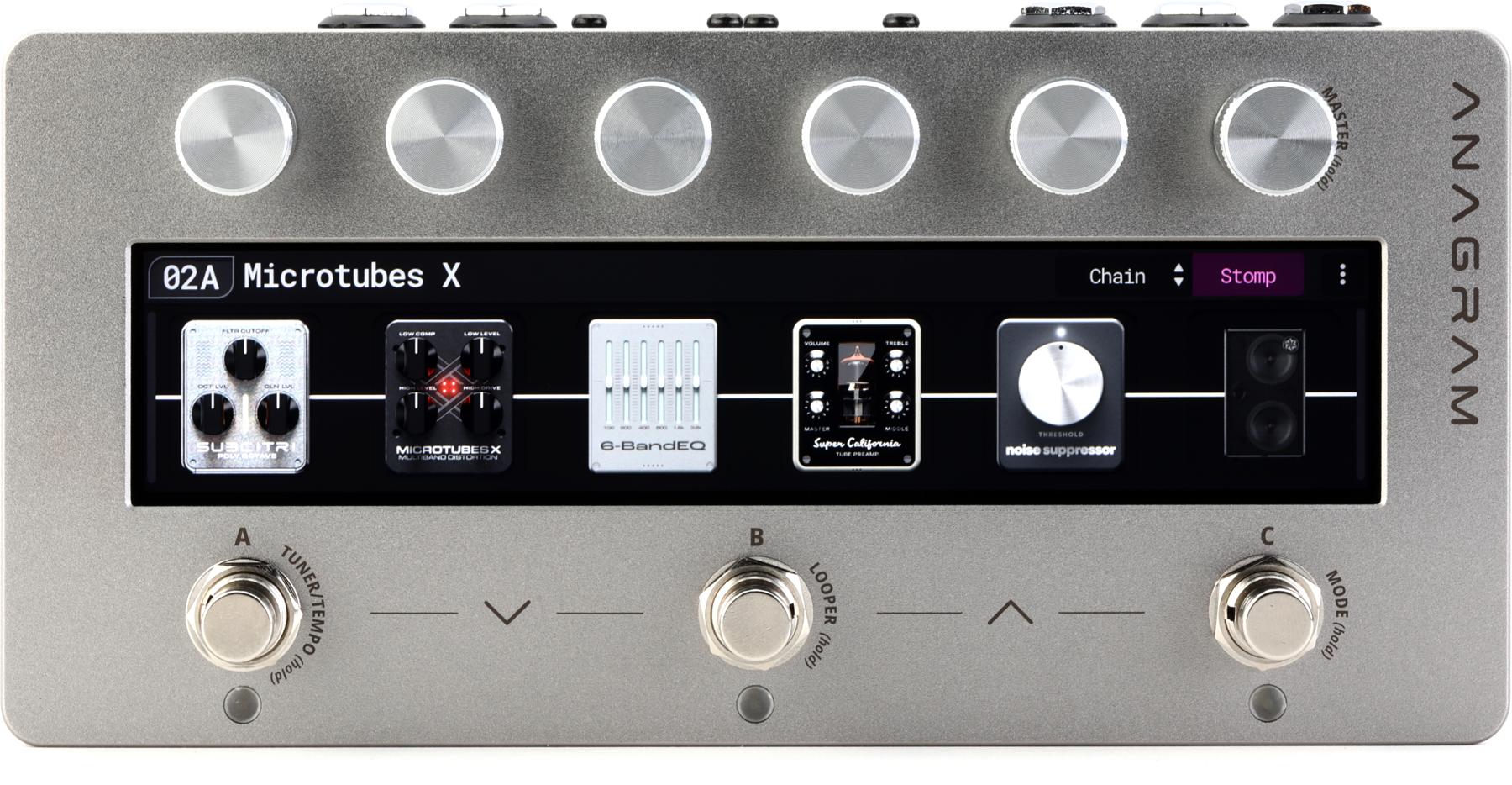Boss’ Katana digital amps are among the most successful amplifiers of all time. They’ve sold over a million units since the first one appeared in 2016. But that’s hardly surprising given the wealth of sounds most Katanas put on offer, their abundance of features, and almost unrivaled bang for the buck.
At this point, the Katana user community is big and enthusiastic. And a sizable, online portion of that community spends a lot of time speculating about what the next generation of Katanas will bring. By the time you read this review, the cat will be out of the bag, and seven new Gen 3 Katana models will hit guitar shop floors. It’s likely that just about every facet of the Katana’s audience, from dedicated, to casual, to curious will be intrigued if not blown away with what the newest generation delivers for relatively little cash.
"The brown patch communicates the nuances of tapping and palm-muting techniques as well as a responsiveness that I might have attributed to tubes in a blindfold test."
Features Overflowing
The flagship of the line, the Katana Artist Gen 3 reviewed here, is a 100-watt 1X12 combo amp with a custom-designed Waza G12W speaker. So far, so simple. But as one look at the rather daunting control panel will tell you, the Artist Gen 3 does a lot.
Boss is careful to distinguish their Tube Logic architecture, which captures the behavior of many individual components in a tube-amp circuit rather than just the output of a tube amp itself as some modelers do. And the depth of the control set reflects that thinking in many respects.
There are eight sections on the front panel: amplifier, equalizer, effects, tone setting, solo, line out, global EQ, and cab resonance. Within each of these control categories, there are many knobs and buttons that enable control of practically every facet of your tone—from the virtual “air” in your line-out signal to wattage (max, half, .5 watts) to cab resonance (deep, modern, or vintage). On the back panel, meanwhile, are line-out and USB jacks for direct recording; an effects loop; as well as jacks for using external modelers and preamps (via the Katana’s own AB power section).
The Katana Artist Gen 3 has five independent effects sections with over 60 Boss effects to choose from. There are also six basic amplifier types—brown, lead, crunch, pushed, clean, and acoustic. There’s a variation button to select an alternate voicing for each amp type as well and a new bloom button, which enhances the power stage with more bass and more-defined attack.
In the tone setting section, you’ll find pushbuttons for bank, CH1 through CH4, and panel. The CH1 through CH4 buttons recall sounds you save (in which case the knobs won’t reflect the settings you hear). Pressing the panel button lets you use the amp in WYSIWYG fashion. This is where most people will start their Katana voyage. But if you just use the Katana Artist Gen 3 as a basic channel-switching amp, you’ll miss out on many of the amp’s most compelling features.
Optional But Recommended
If you’re only going to use the Katana Artist Gen 3 for home practice and recording, then the amp gives you just about everything you need right out of the box. However, if you’ll be using the amp in a live setting, an optional—but I’d say vital—accessory is the 6-button GA-FC EX footswitch. At $149, it’s a considerable expense for an optional accessory, but it makes leveraging the amp’s horsepower, depth, and flexibility in gig situations easier and more satisfying.
The footswitch enables super-smooth transition between patches. You hear none of the pops or lag that you hear even in big-ticket tube amps when you switch between channels. And before you balk at the extra expense, remember that changing amp channels and effects simultaneously in real time with a conventional pedal switcher would require a significantly more expensive switcher, so the GA-FC EX’s price tag is actually reasonable if you compare it to a similarly capable switcher.
Another optional accessory that is very useful is the BT-Dual ($59), which allows you to connect to the amp via Bluetooth. The BT-Dual lets you do a lot—from basic things like playing music from your phone wirelessly (useful when loading backing tracks to jam with) to advanced functionality in the Boss Tone Studio app, which lets you dive deeper into the Artist Gen 3’s customization capabilities.
From your smartphone, you can use Tone Studio to create chains of effects and amp settings. You can also use the app to change between other saved presets. What’s amazing is how immediate and seamless the patch changes are. While letting an open A chord ring, I toggled through various factory patches like spongy crunch, bloom crunch, and sparkle clean, and there were no delays, dropouts, or weird noises between patch changes. The volume levels of the respective patches were within a similar range and the changes felt organic. The Tone Studio app also allows you to edit parameters that are not accessible from the amp control panel alone. For example, you can access the “air feel” settings as well as hidden parameters like mic distance, position, and type, and ambience pre-delay and level, which lets you further sculpt your sound for line-out recording. You can also use the app to access four hidden tonal templates for the contour mini pushbutton.
Tone Mastery
The Katana Artist Gen 3 is loaded with more features than you’re likely to use. But features aren’t worth much if the sounds aren’t there, and across the spectrum of tones I checked out, the Katana impressed.
Just about every preset I tried could form a solid core sound for the genre it was designed for. The brown patch, for instance, with its full-bodied gain and arena-style delay, is ideal for Van Halen leads and communicates the nuances of tapping and palm-muting techniques, as well as a responsiveness that I might have attributed to tubes in a blindfold test. In general, high-gain settings deliver heavy bottom-end output that can be room-shaking—even at a modest volume.
Clean sounds are full and exhibit quite a bit of natural-sounding sustain, which brings melodic fills to life. In fact, the Katana Artist Gen 3 could make an excellent pedal platform—and the amp’s effects loop makes pedals very easy to integrate. But there are so many excellent drive and effects options built in here that, unless you have very specific pedal sounds you rely on, it would almost be a shame to not take advantage of the onboard options and keep your rig to a streamlined minimum.
The Verdict
Like most Premier Guitar readers, I’ve invested thousands of dollars into many amp and effects setups. But the reality is that the Katana Artist Gen 3 can do many of the things my more expensive setups can do, and do them exceptionally well. It sounds amazing in many applications, and can be used as a professional stage amp, home practice amp, and at the front end of your recording rig. And at $599, its capabilities are pretty extra-astounding.





















